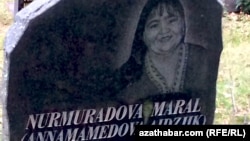
Shavkat Mirziyaev has arrived in China to pay his first official visit to that country as Uzbekistan's president.
The visit lasts through May 13, after which he will attend his first major international conference as Uzbek head of state when he stays on in China for the May 14-15 One Belt-One Road forum.
Mirziyaev is due to meet with Chinese President Xi Jinping and other top Chinese officials, as well as with representatives of leading Chinese companies.
According to Asad Khojaev, the head of Mirziyaev's press service, Uzbekistan and China will sign around 100 agreements worth an estimated $20 billion in Beijing.
China is already one of Uzbekistan's leading trade partners and a key investor in projects in Uzbekistan.
Chinese companies helped construct the Pap-Angren railway, a 123-kilometer-long line from eastern Uzbekistan to an area not far from the capital, Tashkent, a $1.9 billion project financed in part by China's Export-Import Bank.
China has also helped fund and construct three gas pipelines from Turkmenistan to China that run through Uzbekistan. And Beijing has signed contracts with Tashkent for Uzbekistan to eventually supply up to 10 billion cubic meters of gas annually through those pipelines.
Mirziyaev signaled early on in his presidency that he would be seeking closer economic cooperation with other countries to help invigorate Uzbekistan's flagging economy.
China has proven to be a prime source of foreign investment and loans, not just for Uzbekistan but for all the Central Asian states. However, Beijing has already helped fund most of the major projects that link Central Asia to China, including roads, railway lines, and oil and gas pipelines, and Uzbek businessmen accompanying Mirziyaev might find fewer opportunities for cooperation with China than during the last decade.
Press releases ahead of Mirziyaev's trip made just passing mention of talks on security cooperation, though this is likely to be a key topic in Mirziyaev's conversations with Chinese officials.
Uzbekistan has a short (approximately 160 kilometers long) border with Afghanistan, and Beijing is said to be increasingly concerned about Muslims from China's western Xinjiang Autonomous Uyghur Region appearing in the ranks of Islamic extremist groups in Syria and Iraq.
According to some reports, as these groups are being forced out of these two Middle Eastern countries, many of the Central Asians and Uyghurs in these extremist organizations are making their way to Afghanistan.
China and Uzbekistan are both members of the Shanghai Cooperation Organization, along with Russia, Kazakhstan, Kyrgyzstan, and Tajikistan (and soon India and Pakistan). That organization has commitments to cooperation in countering terrorism.
Mirziyaev served as Uzbekistan's prime minister from 2003 to 2016, so he has been to China several times before and is already acquainted with some Chinese officials.
Beyond improving trade ties with China, Mirziyaev might also be seeking to maintain and strengthen the political ties between the two countries. China has become a linchpin in Uzbekistan's foreign policy, helping Tashkent fend off Western criticism of rights abuses in Uzbekistan and serving as an important counterweight to former colonial master Russia.






